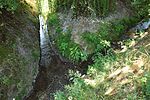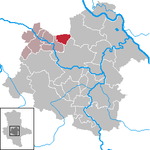Langenweddingen level crossing disaster

The Langenweddingen rail disaster near Magdeburg in East Germany caused 94 deaths. It occurred on 6 July 1967 at the village of Langenweddingen, today part of the Sülzetal municipality, on the Magdeburg–Thale railway in the then East Germany when a bilevel train struck a fuel tanker, which exploded as a result of the collision, at a level crossing of Highway 81. With an official death toll of 94 people, the disaster is considered the most serious accident in the postwar railway history of East Germany. It was also the deadliest German post-war railway accident until the Eschede train disaster of 1998, as well as one of the most disastrous accidents involving dangerous goods in German history.
Excerpt from the Wikipedia article Langenweddingen level crossing disaster (License: CC BY-SA 3.0, Authors, Images).Langenweddingen level crossing disaster
Halberstädter Straße, Sülzetal
Geographical coordinates (GPS) Address Nearby Places Show on map
Geographical coordinates (GPS)
| Latitude | Longitude |
|---|---|
| N 52.045555555556 ° | E 11.532777777778 ° |
Address
Halberstädter Straße 42C
39171 Sülzetal (Langenweddingen)
Saxony-Anhalt, Germany
Open on Google Maps





